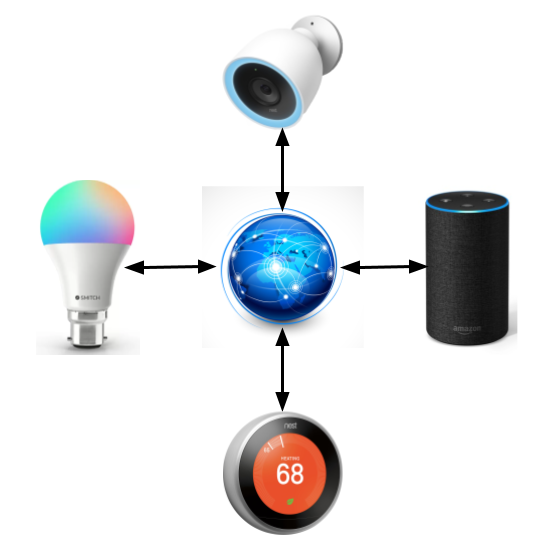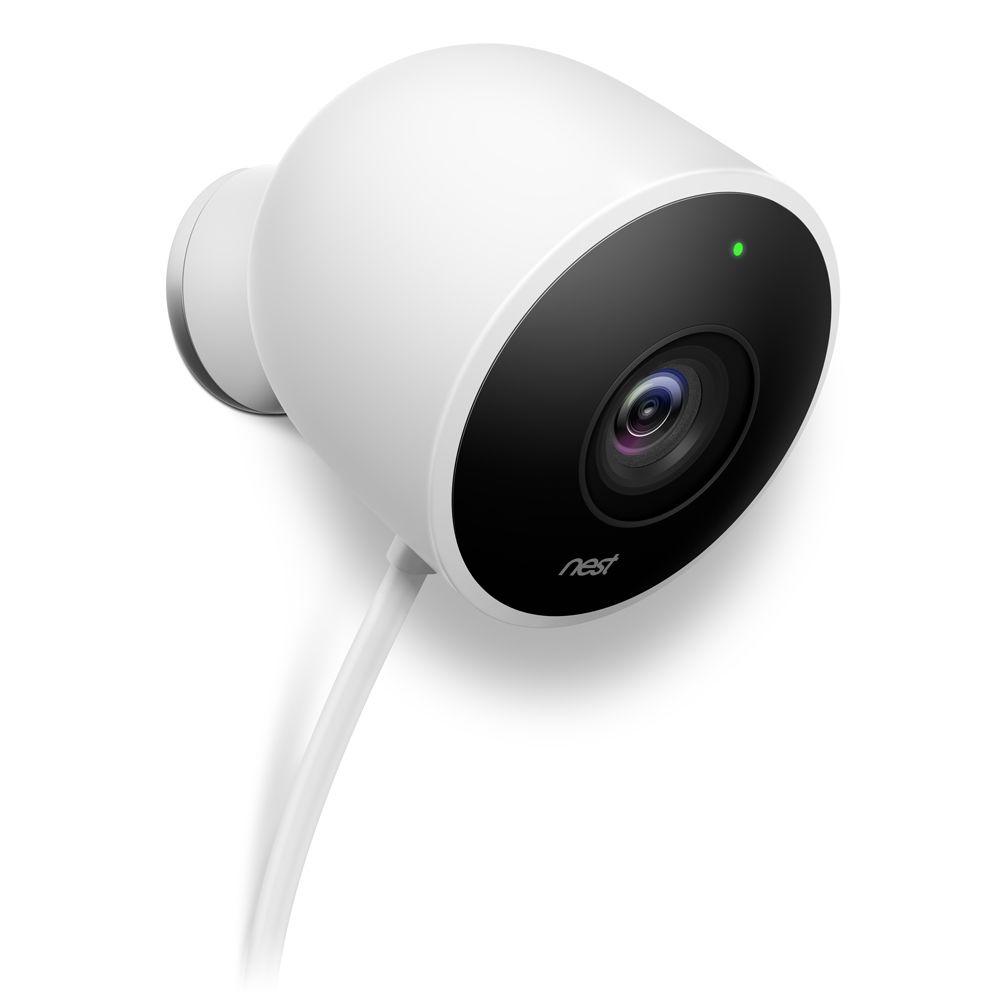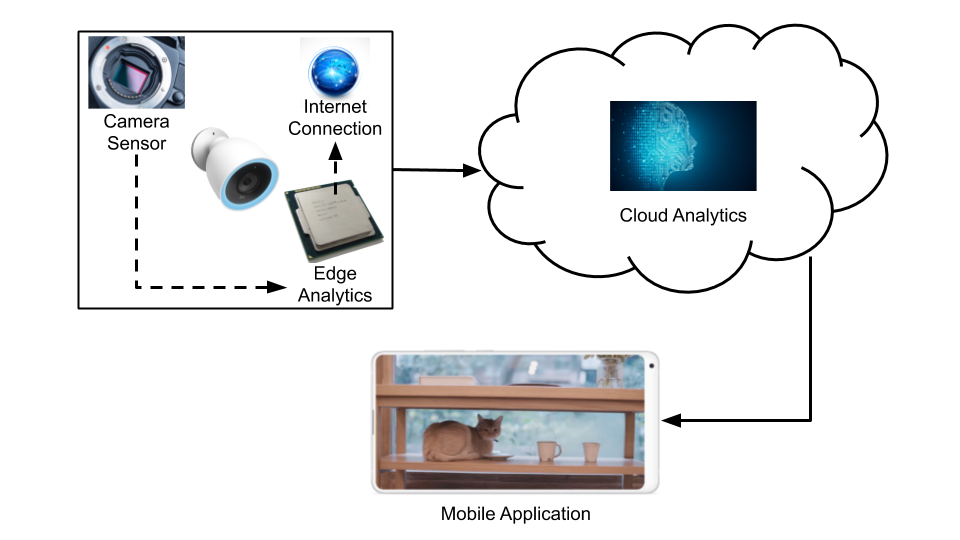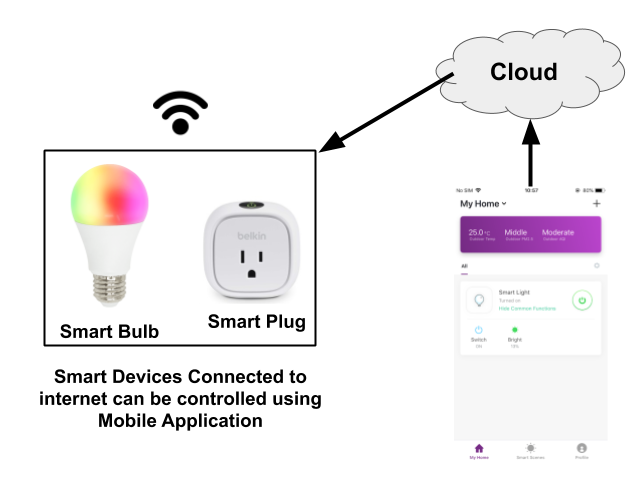IoT stands for ” Internet of Things“. It has applications in consumer electronics, medical, home & industrial automation and automotive industry. In this article we will discuss what is IoT? how it works and IoT applications. Read this article to know the applications of the internet of things in manufacturing.
What is the Internet of Things ?

In a layman language. IoT is about connecting devices with the internet. Each IoT device has a unique identifier (UIDs or MAC address) and ability to transfer data without human interaction. The internet of things creates an ecosystem of internet connected devices.
Therefore connected devices can send and receive real time information without human intervention. It helps in monitoring real time data from anywhere in the world and makes devices smart and connected.
What are IoT Devices?
Any device connected to the internet is known as an IoT device. You can connect any device with digital output to the IoT. Here a device can be your heating or cooling system, refrigerator, lighting system, security camera, sensors or industrial machines. Internet of Things is also used to create digital profile / Digital Twin of a human or a machine.
How does an IoT system works?
Internet of Things is not about one individual device. It’s a complete ecosystem. An IoT system works by connecting a device to the internet. In this way the IoT device can send real time data to the cloud. In the cloud this data is processed and required information is provided to the user.
Let’s try to understand the working of the IoT ecosystem considering an example of an IoT connected Camera.
Working of IoT enabled Camera Device

When a user install a smart connected camera. They can expect following features from that connected camera.
- Real time Video Feed.
- Real time audio feed.
- Smart enough to differentiate between usual and unusual activity.
- Send Alerts if something unusual happens.
- Stores video Data
- Two way communication using camera.
All the above customer expectations can not be met without connecting camera to internet and analyzing real time data. Lets try to understand step-by-step how the Internet of Things Works considering the example of smart security cameras.

Step-1: Collection of Data
First step for any IoT device is to collect the available data. For example, a camera collects outdoor environment images using the camera sensor.
Step-2: Edge Analytics and Sending Data to the Cloud
IoT connected devices have the ability to analyze real time data and take important decisions. This process is known as edge computing. In camera, real time collected data is processed and analyzed. If anything unusual is recorded. Real time data is sent to the cloud for detailed analysis. Therefore edge computing helps in reducing cloud computing and internet cost.
Step-3 : Cloud Analytics
Data in the cloud is analyzed by machine learning algorithms to take precise and difficult decisions. In a connected camera, if any alert is detected in camera edge computing. it is re-verified by more precise algorithms in the cloud. Therefore false alerts to the users are reduced.
Step-4: Communication with User
Connected device sends real time alerts to the user. Real time information is also stored in Cloud storage. Therefore users can access this information on demand.
Applications of Internet of Things
Internet of Things have wide variety of application in following areas:
- Home Automation
- Consumer Electronics Products
- Wearable
- Automotive : Connected & Self Driving Car
- Healthcare
- Education
- Manufacturing and Industrial Automation
- Digital Twin
- Supply Chain Management
- Smart Farming etc.
Examples of the applications of IoT
Examples of IoT applications includes:
Collect Real Time Environment Data
BLE Based connected IoT sensors collect and send real time environmental data to connected devices. This data can include temperature, humidity, pressure and air quality of the environment.
This information can be used to control and monitor other devices such as air conditioners, air filter and humidity controller.
Real Time indoor and Outdoor Positioning
GPS is the best way to determine the real time position of an object. But when IoT is introduced in GPS devices. It can have a lot of applications. Internet connected GPS devices can monitor object real time position. IoT in GPS trackers has the following applications but not limited to this.
- Track Elderly people and children for their security.
- Create a zone for a movable asset/people.
- Track your vehicle’s real time location data.
- Track shipments and other important assets.
Smart Connected Devices
When any devices (light bulb, Air conditioner, other household appliances) are connected with the internet. They are known as smart connected devices.

Users can operate smart connected devices from anywhere in the world. For example, if a user is sitting in the office and wants to turn on his smart AC before he reaches home. He can do this by using a mobile application. For more details on smart devices. We suggest you read article on What is Smart Lighting and What is Smart Plug.
To sum up, Internet of Things is all about connecting the things that can be any device, human or animals to the internet. It gives the benefit of the availability of real time device data without human intervention.

Add a Comment